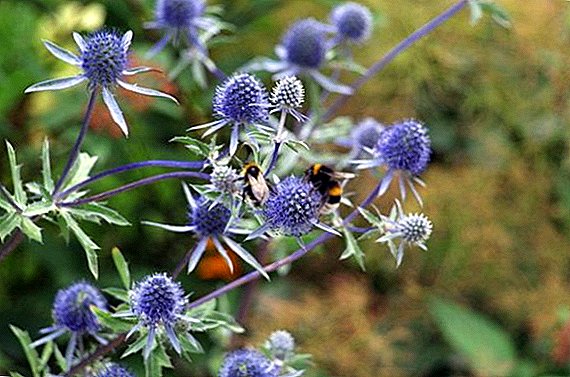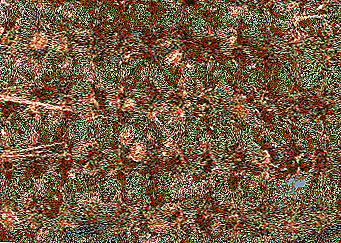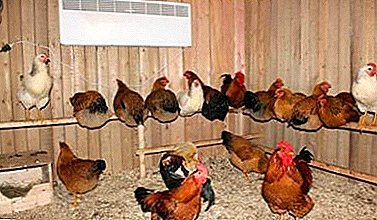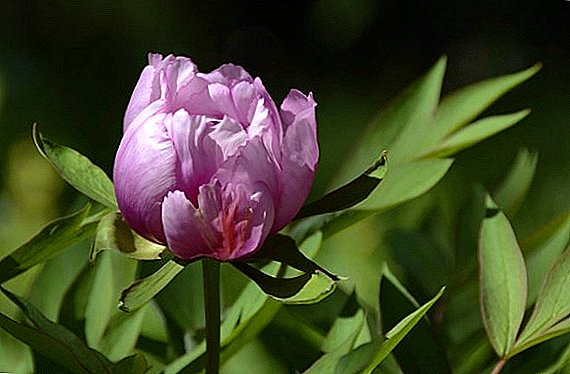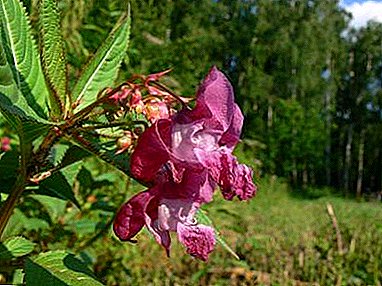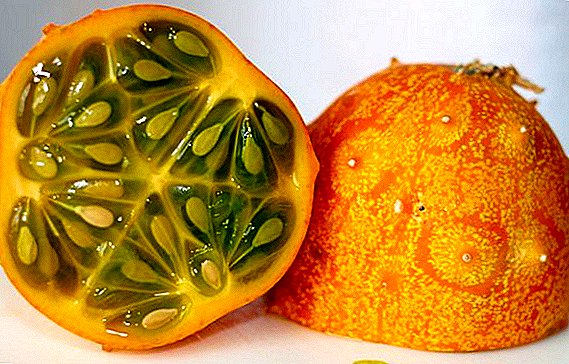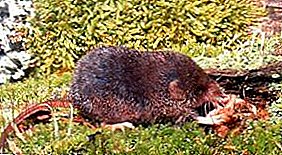
Shrews are small animals distributed throughout the countries of the northern hemisphere. In total, there are about 130 different species, mostly dwelling in North America, Europe, North Asia.
Shrews do not dig burrows, but use the aisles of mice, moles, and make their own paths under the snow and forest floor. Animals do no harm, on the contrary, eating insects and their larvae, destroy a large number of pests of forests and farms.
Types of shrew
Ordinary
 Common shrew is the most common animal of this species in Russia.
Common shrew is the most common animal of this species in Russia.
Body length 6-9 cm, tail 3.5-5 cm. Weight - 6-15 g. It has a dark fur, elongated muzzlesmall ears and small black eyes.
Most often it settles in deciduous and mixed forests, choosing shady and humid zones as its habitat.
Predominantly active at night, leaving the shelters 2-3 hours before night falls. Eats various types of insects and their larvae, earthworms, frogs, seeds.
This view is clearly seen in the photo attached below.

During the hungry periods can eat small carrion. During feeding, it usually stands on all four paws, but the slippery insect captures the forelimbs. Common shrew on the bark of trees can climb to the pair of silkworm eggs or nun butterfly.
For the year brings three broods. The gestation period can take 18-28 days, in one litter up to 10 cubs are born. The female builds a nest of leaves and stalks of grass, putting soft material into it. The term of life is no more than 1.5 years.
You can clearly see the common shrew on the video below.
Little shrew (American)
 Baby shrew is smallest species shrewwho lives in North America.
Baby shrew is smallest species shrewwho lives in North America.
Its scientific name is Sorex hoyi, this animal has acquired the surname of a naturalist and a doctor from America Philip Hoy.
He lives in Canada and the United States, where he settles in forests with deciduous and coniferous trees, as well as in the open air.
The body length of this species of shrew is no more than 5 cm, including 2 cm - the tail. Weight reaches 2-2.5 grams. The coat has a gray-brown or red-brown shade on the back, and light on the abdomen. During winter, all fur is lightened..
Shows activity at any time of the day, as well as all year round. Like other shrews, it feeds on small insects, worms and other small invertebrates. The enemies in nature are birds of prey, snakes, domestic cats.
The reproduction period begins in the first months of summer, the pregnancy lasts 18 days. For the year shrew shred brings only one litterin which there are from 3 to 8 cubs.
Tiny
 Tiny shrew - smallest mammalwhich lives in Russia, as well as one of the smallest insectivorous animals found in Europe.
Tiny shrew - smallest mammalwhich lives in Russia, as well as one of the smallest insectivorous animals found in Europe.
It inhabits the territory from the Scandinavian countries to the Far East, including Fr. Sakhalin.
In the northern regions, lives right up to the border of the tundra and forest-tundra. Listed in the Red Book of the Murmansk region.
The length of the animal is no more than 5 cm, of which 2.5-3 cm falls on the tail. The average weight is 3-4 grams. It has a broad head, which sharply turns into a proboscis.
When compared with other types of shrew, this one has the smallest tail - it takes up to 54% of the entire length.
How tiny a size can be seen in the photo below.

The coat color is brown or dark brown on top and light gray on the belly. The tail is also covered with fine wool with a clearly visible change from dark to light.
Lives in forests with different types of trees., on the edges of the marshes. Tiny shrew is also found in the tundra, semi-deserts and steppes.
But during the settlement he loves exactly those places where you can find a large amount of food, regardless of the season and conditions. It feeds on small insects, larvae, spiders.
Due to a very high metabolism can eat up to 80 times a dayalternating these intervals with sleep. When fasting dies within a couple of hours.
For a year 1-2 litters can be hatched, in each of which there is up to 8 (usually 4-5) cubs.
Small
 Small shrew is small longtail. It is found in Europe and Russia - from the European part and to southern Siberia.
Small shrew is small longtail. It is found in Europe and Russia - from the European part and to southern Siberia.
Body length 4-6 cm, while the tail is 50-70% of the length. Weight up to 5 grams. The proboscis on the face is very elongated, which, along with the length, is the main difference of this species from the tiny shrew. The color of the fur on the back is from brown to red, the belly is much lighter. In winter, the wool darkens even more.
A small shrew lodges in forests, places with dampness, but not very shaded. Dislikes open areas with dry grass. It feeds on small insects, spiders, worms, including dung beetles, ground beetles, leaf beetles and many others. Active throughout the day.
The breeding season lasts all summer.during which 1-2 litters with 4-12 individuals appear in the animal.
Average
The average shrew in its size occupies a transitional position between the small and the ordinary. Populates a wide area from eastern Europe to the Far East, Mongolia and Korea. This is the only shrew that can be found in any natural conditions from floodplains to mountain tundra.
At the same time, a stable number of these animals is found only in floodplain larch forests. It is one of the most numerous shrews.
The average shrew feeds on insects and larvaewhich are found in the forest litter, as well as by beetles, spiders, and earthworms. In winter, it strongly depends on larch seeds, the failure of which can lead to a massive death of the animal during the cold period.
Breeding occurs in the warm season, usually in the litter is from 2 to 11 pups.
Giant
 The giant shrew is the most a large representative of this species of animals. In addition, it lives only in a restricted area of the Primorsky Territory, and therefore is listed in the Red Book of Russia as a rare species with a decreasing number. Data on the number of individuals are not available.
The giant shrew is the most a large representative of this species of animals. In addition, it lives only in a restricted area of the Primorsky Territory, and therefore is listed in the Red Book of Russia as a rare species with a decreasing number. Data on the number of individuals are not available.
Body length - from 7 to 10 cm, of which tail accounts for 70-75%. Weight reaches 14 grams. The coat color is gray-brown, long antennae are well visible on the muzzle (up to 3 cm).
Giant shrew - photo attached.

Eats insects every day as much as it weighs. In this case, the animal may die if it does not eat more than 3 hours.
The main food is earthworms, which make up 95% of its menu. Also uses frogs, snakes, small rodents, fruits of plants.
In search of food, it can burrow into dense soil. It lives about 1.5 years. In one year, females of the giant shrew bring only one offspring.however, the number of calves is not known.
Equal tooth
 The equal tooth shrew has specific differenceswhich allow to reveal it from other species - one has a uniform color of a dark shade, and pronounced fifth upper tooth.
The equal tooth shrew has specific differenceswhich allow to reveal it from other species - one has a uniform color of a dark shade, and pronounced fifth upper tooth.
Lives in the taiga zone, from Scandinavia to the Pacific Ocean, is found in Belarus (the only species of shrew living in this country). Loves the river valleys. Included in the Red Book of Karelia and the Moscow region.
Body size - 6-9 cm, of which the tail accounts for up to 55%. Equal toothed shrew weighs about 6.5 grams. It feeds on insects and their larvae, which it finds in the forest floor. In winter, it passes to the seeds of spruce and deciduous trees.
Live up to 1.5 years. The reproduction period in winters begins in late spring. Females per season can bring 1-2 offspring, 2-10 cubs in each.
Flat-craned (brown)
 The flat-craned shrew is another species that can be determined without resorting to measurements. This includes characteristic coat colorwhich goes from dark on the back to light on the sides and gray-white on the abdomen. In addition, in this animal the tail is fairly hairy.
The flat-craned shrew is another species that can be determined without resorting to measurements. This includes characteristic coat colorwhich goes from dark on the back to light on the sides and gray-white on the abdomen. In addition, in this animal the tail is fairly hairy.
The distribution area of the flat-head shrew is from the Urals to the coast of the Pacific Ocean. Lives in the tundra, taiga and mountainous areas, often found within the habitat zone. Loves areas of dark coniferous taiga.
There is no accurate dietary data. Most likely, it is not much different from the menu of other representatives of this species, which includes insects, larvae and earthworms.
It breeds in the warm season, at one time it is capable of giving birth to 8 to 10 cubs.
Conclusion
Shrew is found in many countries, inhabiting almost all natural areas - from tundra to steppes.
Sizes range from 5 to 10 cm, some species due to limited habitat are listed in the local Red Books.
The diet of all animals is similar, and includes various types of insects, spiders and worms. Harm to the farm does not cause.
Want to know what types of shrews exist, how to get rid of them at the dacha, follow the link.


